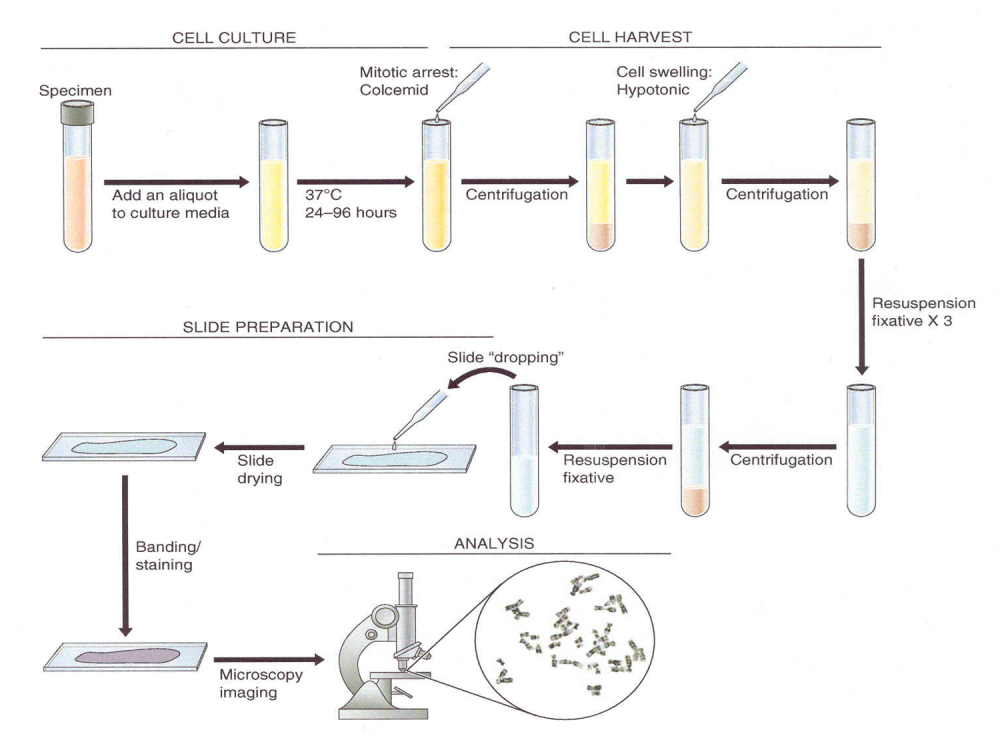Blood white cells of healthy individuals may contain non-recurrent, random chromosomal aberrations (CAs), which disappear with cell turnover as they provide no growth advantage. These include chromatid breaks, fragmented or missing parts of chromosomes and fusions resulting in dicentric and ring chromosomes. These nonspecific CAs have been used in monitoring of occupational populations exposed to potential carcinogenic chemicals and radiation. The analysis of CA proceeds in many steps (Figure). The specimen in the figure is the fresh blood sample, which is cultured and harvested for slide preparation; the slides are then analyzed to score CAs.
The frequency of CAs has been associated with cancer risk and the association has also been observed among incident cancer patients. In addition to DNA damaging exposures, dysfunctions in DNA repair mechanisms are thought to be responsible for the formation of CAs; unrepaired or insufficiently repaired DNA double-strand breaks, as well as telomerase dysfunction, are considered to be the mechanistic bases for the formation of CAs.
In the recently published study, we used the result of our published genome-wide association studies to extract data on 153 DNA repair genes from 866 nonsmoking persons who had no known occupational exposure to genotoxic substances. The subjects were identified from extensive cohorts of voluntary donors from the Czech and Slovak Republic, who were part of several previous and ongoing investigations about CAs. Considering an arbitrary cut-off level of P< 5×10-3, single nucleotide polymorphisms (SNPs) tagging 22 DNA repair genes were significantly associated with CAs. Nucleotide excision repair pathway genes showed most associations with 6 genes. Among the associated genes were several in which mutations manifest CA phenotype, including Fanconi anemia, WRN, BLM and genes that are important in maintaining genome stability, as well as PARP2 and mismatch repair genes. The present results show associations with some genes with known CA phenotype and suggest other pathways with mechanistic rationale for the formation of CAs in healthy nonsmoking population.
DNA repair gene polymorphisms and chromosomal aberrations in healthy, nonsmoking population
Yasmeen Niazi; Hauke Thomsen; Bozena Smolkova; Ludmila Vodickova; Soňa Vodenkova; Michal Kroupa; Veronika Vymetalkova; Alena Kazimirova; Magdalena Barancokova; Katarina Volkovova; Marta Staruchova; Per Hoffmann; Markus M. Nöthen; Maria Dusinska; Ludovit Musak; Pavel Vodicka; Asta Försti; Kari Hemminki.
DNA Repair (Amst). 2021 May;101:103079. doi: 10.1016/j.dnarep.2021.103079.

Figure 1: Step-wise preparation of white blood cells from blood to the analysis of chromosomal aberrations.
